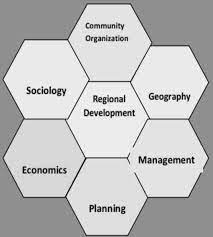Regional development planning is a comprehensive approach to improving the economic, social, and environmental conditions of specific regions. It involves the coordination of policies, programs, and investments to promote balanced and sustainable development across different areas. This planning process aims to reduce regional disparities, enhance infrastructure, support economic growth, and improve the overall quality of life for residents.
1. Introduction to Regional Development Planning
Regional development planning is essential for addressing the unique challenges and opportunities that various regions face. It considers the geographical, economic, and social characteristics of a region to create tailored strategies that foster sustainable growth and development.

2. Objectives of Regional Development Planning
- Economic Growth: Stimulating economic activities and creating jobs.
- Infrastructure Development: Improving transportation, communication, and public utilities.
- Social Equity: Reducing disparities in income, education, healthcare, and living standards.
- Environmental Sustainability: Promoting green practices and preserving natural resources.
- Regional Integration: Enhancing connectivity and cooperation between different regions.
3. Key Components of Regional Development Planning
A. Economic Development
- Industry and Commerce: Identifying and supporting key industries and commercial activities that can drive regional growth.
- Innovation and Entrepreneurship: Encouraging innovation and supporting startups and small businesses.
- Investment Promotion: Attracting domestic and foreign investments through incentives and favorable policies.
B. Infrastructure Development
- Transport Networks: Developing roads, railways, ports, and airports to improve connectivity.
- Utilities and Services: Ensuring access to electricity, water, sanitation, and telecommunications.
- Urban Development: Planning for the expansion and modernization of urban areas to accommodate population growth.
C. Social Development
- Education and Training: Improving access to quality education and vocational training to build a skilled workforce.
- Healthcare Services: Enhancing healthcare infrastructure and services to ensure the well-being of residents.
- Housing and Community Services: Providing affordable housing and essential community services.
D. Environmental Management
- Sustainable Practices: Promoting renewable energy, waste management, and sustainable agriculture.
- Conservation Efforts: Protecting natural habitats, water resources, and biodiversity.
- Climate Resilience: Developing strategies to mitigate and adapt to climate change impacts.
4. Process of Regional Development Planning
A. Assessment and Analysis
- Data Collection: Gathering data on economic, social, and environmental indicators.
- SWOT Analysis: Identifying the strengths, weaknesses, opportunities, and threats of the region.
- Stakeholder Engagement: Involving local communities, businesses, and government agencies in the planning process.
B. Vision and Goal Setting
- Vision Statement: Defining a long-term vision for the region’s development.
- Strategic Goals: Setting specific, measurable, achievable, relevant, and time-bound (SMART) goals.
C. Strategy Formulation
- Policy Framework: Developing policies that support regional development objectives.
- Action Plans: Creating detailed plans that outline the steps required to achieve the goals.
D. Implementation and Monitoring
- Resource Allocation: Securing funding and resources for implementation.
- Project Management: Overseeing the execution of development projects.
- Monitoring and Evaluation: Tracking progress and assessing the impact of interventions.
5. Challenges in Regional Development Planning
- Resource Constraints: Limited financial and human resources can hinder the implementation of plans.
- Political and Administrative Issues: Political instability and bureaucratic inefficiencies can affect progress.
- Coordination Difficulties: Aligning the interests and actions of various stakeholders can be challenging.
- Data Limitations: Inadequate data can impede accurate assessment and planning.
6. Case Studies in Regional Development Planning
A. European Union Cohesion Policy
- Objective: To reduce disparities between regions in the EU.
- Approach: Providing funding for infrastructure, innovation, and social projects in less-developed regions.
- Impact: Significant improvements in regional economic performance and living standards.
B. China’s Western Development Strategy
- Objective: To promote economic development in western China.
- Approach: Investing in infrastructure, education, and industry.
- Impact: Rapid economic growth and improved infrastructure in western provinces.
7. Future Trends in Regional Development Planning
- Smart Cities: Integrating digital technologies to enhance urban living and regional connectivity.
- Sustainable Development Goals (SDGs): Aligning regional planning with global sustainability targets.
- Public-Private Partnerships: Leveraging private sector expertise and resources for development projects.
- Resilient Infrastructure: Building infrastructure that can withstand environmental and economic shocks.
8. Conclusion
Regional development planning is a vital tool for achieving balanced and sustainable growth. By considering the unique needs and potentials of different regions, planners can create targeted strategies that enhance economic performance, improve social equity, and ensure environmental sustainability. Effective regional planning requires collaboration, innovation, and a commitment to long-term development goals.



